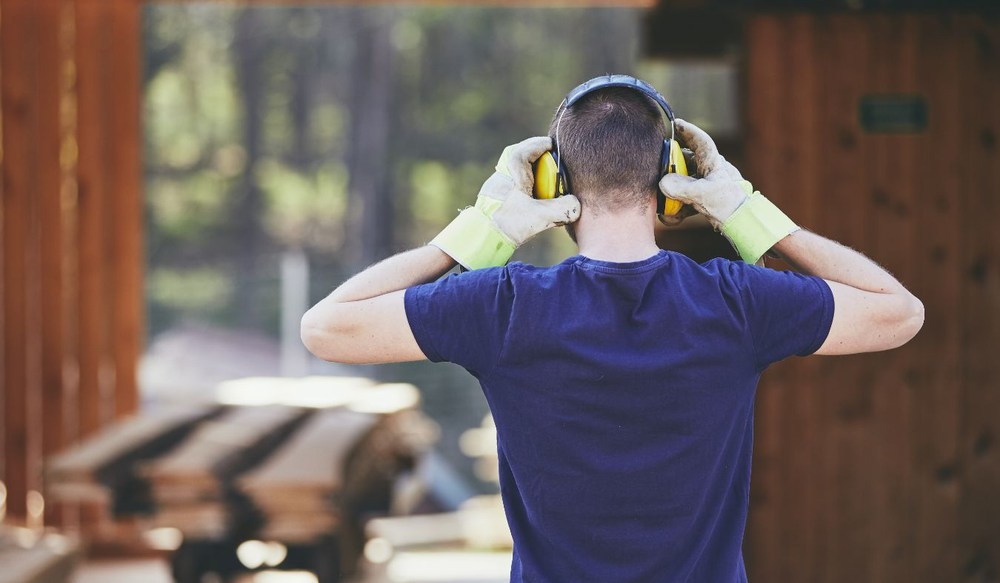How to Protect Your Hearing During the Fall Season
Fall brings cooler weather and plenty of outdoor activities, but it also
New Location Now Open in Montgomery, TX! Learn More →

By: admin | November 18, 2025
Fall brings cooler weather and plenty of outdoor activities, but it also creates situations where your hearing can be affected without you realizing it. Raking leaves, using leaf blowers, running chainsaws for firewood prep and operating other yard equipment all produce noise levels that can damage your hearing over time. Add in outdoor sporting events, fall festivals with live music and hunting season, and you’re facing more exposure to potentially harmful sounds than you might during other times of year. Weather changes can also affect your ears directly, with cooler temperatures and wind causing discomfort or making existing ear conditions feel worse.
Protecting your hearing during fall doesn’t require major lifestyle changes or avoiding the activities you enjoy. It’s about recognizing which situations put your ears at risk and building protective habits into your routine. Whether you’re spending weekends doing yard work, attending high school football games or enjoying outdoor concerts and festivals, a little awareness goes a long way in preventing hearing damage. Small actions taken consistently make a real difference in maintaining your hearing and keeping your ears comfortable as the season changes.
Seasonal shifts, including changes in temperature and humidity, can affect your ears in different ways. Cold air may lead to dryness or irritation in the ear canal, while damp weather can raise the risk of ear infections. Moving between warm and cold environments might cause a temporary feeling of fullness or pressure in your ears.
Allergies that are common in fall, like those caused by pollen, can also impact your hearing by causing congestion or fluid buildup. These issues may make sounds seem muffled or harder to hear for a short time.
Cooler weather can affect your ears in several ways. Cold air often dries the skin around your ears and inside the ear canal, which can lead to itching or small cracks that make your ears more sensitive. Windy conditions may also create a sense of fullness or pressure, and spending time outside with damp ears can make them more vulnerable to irritation or infection. Protecting your ears from the cold, especially after being in water or humid conditions, helps keep them comfortable as temperatures drop.
Indoor environments can also influence ear health once heaters are turned on for the season. Heating systems often remove moisture from the air, which can dry out the ear canal and cause similar itching or irritation to what you might experience outdoors. Prolonged dryness may leave the skin more prone to discomfort or minor infection, especially if you’re already spending long hours in heated spaces.
Fall noise levels that reach certain limits, even for a short time, can harm your hearing. Being aware of which fall traditions carry higher sound levels helps you make small adjustments to protect your ears without missing out on the fun.
Some common fall activities and their approximate noise levels include:
Paying attention to early signs of noise exposure during autumn events can help you protect your hearing before problems develop. You might notice ringing in your ears, muffled sounds or a feeling of fullness after being around loud noises.
These early warning signs often fade quickly, making them easy to ignore. Noticing how your ears feel after attending noisy events and taking breaks from loud environments are good ways to help prevent lasting hearing loss.
Wind and sudden changes in weather can make your ears uncomfortable or even lead to earaches. Wearing a hat, earmuffs or a headband helps keep your ears warm and shields them from cold air and strong gusts.
Moisture from rain or snow can get trapped in your ears and raise the risk of infection. Drying your ears gently with a towel after being outside is an easy way to help prevent this. Taking these steps allows you to enjoy fall weather while keeping your hearing safe. Being prepared for changing conditions gives you confidence as you spend time outdoors.
Outdoor sports and hunting are popular fall activities that can bring sudden loud noises capable of harming your hearing. The sound of a gunshot or the roar of an engine can reach levels high enough to cause lasting damage in just seconds.
Wearing proper hearing protection, like earmuffs or earplugs made for shooting or motorsports, helps lower your risk during these activities. With a little planning, you can continue enjoying your favorite outdoor hobbies while protecting your hearing for the future.
Fall cleanup often means more time spent with loud equipment like leaf blowers, lawnmowers and power tools. These machines can reach high noise levels that may cause lasting hearing damage, even after only a short period of use. While they make outdoor chores faster and easier, it’s important to remember that the volume produced by these tools can easily exceed safe listening levels. Taking steps to limit exposure and protect your ears helps you get your work done without affecting your hearing health.
Choosing the right hearing protection is one of the most effective ways to stay safe during noisy yard work. Earplugs or earmuffs with a high Noise Reduction Rating (NRR) are designed to block out harmful sound levels while still allowing you to hear what’s happening around you. Comfort and fit also matter since protection only works if you can wear it consistently. Whether you are trimming branches, blowing leaves or using a chainsaw, using well-fitted hearing protection every time supports long-term ear health and lets you finish your fall tasks safely and comfortably.
Wearing hats and scarves during cold weather helps protect your ears from chilly air and wind. Up to half of body heat can be lost through the head, making ear coverage important for warmth and comfort.
Covering your ears with a warm hat or scarf helps reduce the risk of dryness, irritation or even frostbite in very cold conditions. Keeping your ears shielded also helps maintain their natural moisture, which is important for overall ear health during the fall and winter months.
Fall gatherings and festivals are full of excitement, from live music and cheering crowds to fireworks and parades. While these moments are part of what makes the season enjoyable, the noise levels at such events can often rise well above safe listening limits. Continuous exposure to loud sound can leave your ears feeling tired or cause temporary muffling that may become more serious over time.
Paying attention to your surroundings and knowing when sound levels are getting too high is an important part of protecting your hearing. Standing farther from speakers, stepping away from noisy areas for short breaks or wearing earplugs designed for concerts and events can make a big difference in comfort and long-term ear health.
Fall activities come with different noise levels, so choosing the right type of hearing protection can make a real difference in keeping your ears safe and comfortable. Some of the most common options include:
Sometimes changes in hearing are subtle and easy to miss, especially during busy fall months. If you notice that conversations seem harder to follow or that you need to turn up the TV more than before, it may be time to pay closer attention to your hearing.
Other signs include ringing in your ears, frequent requests for people to repeat themselves or trouble hearing in group settings. These changes should not be ignored. Your hearing specialist can help check if these issues are related to hearing loss or something else.
Sudden shifts in your ability to hear, like a quick drop in hearing on one side or lasting muffled sounds after loud events, should always be taken seriously. Staying alert to these signs supports your long-term ear health and comfort throughout the changing seasons.
Keeping your hearing safe during the fall is easier than it might seem. Simple steps, like wearing protection when using noisy equipment, spacing out high-volume activities and noticing how your ears react to cooler or windy conditions, can prevent discomfort and long-term effects. Paying attention to these moments and adding small protective habits to your routine helps you enjoy seasonal activities while maintaining healthy hearing.
If you have questions about protecting your hearing or notice changes in how you hear, we’re here to help. You can reach Clark Hearing in Texas at Montgomery: (281) 475-8186, Magnolia: (281) 882-3127, Shenandoah: (281) 429-8094 or Tomball: (281) 602-0192. Our team can offer practical tips to reduce noise exposure and keep your ears comfortable, so you can make the most of every fall activity.
Tags: hearing loss prevention tips, hearing protection products

Fall brings cooler weather and plenty of outdoor activities, but it also
By: admin | November 18, 2025

As you get older, maintaining your hearing becomes increasingly important
By: admin | August 21, 2025

Spring brings change – flowers bloom, temperatures rise and outdoor
By: admin | April 24, 2025
